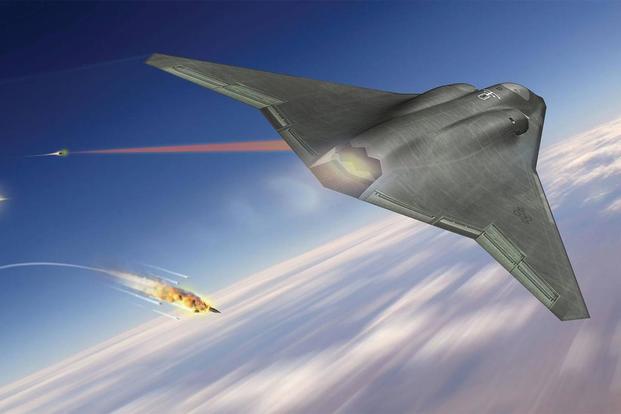Three years after the U.S. Air Force laid out initial plans for what its future fighter jets might look like, the service has unveiled a new office that aims to turn the vision into reality.
Dr. Will Roper, Assistant Secretary of the Air Force for Acquisition, Technology and Logistics, on Wednesday cut the ribbon on the 'Program Executive Office for Advanced Aircraft' during a ceremony at Wright-Patterson Air Force Base, Ohio, the service said in a release.
Roper named Col. Dale R. White as the head of the office. According to his official biography, White was previously the senior materiel leader for the B-21 Raider program at the Air Force Rapid Capabilities Office at the Pentagon. The stealth bomber is set to become the Pentagon's largest aircraft acquisition program since the F-35 Joint Strike Fighter.
"I am turning to this program and to [White] in particular to find a way to bring the best technical expertise that we have to bear, to understand industry's business case -- because if it's not good for industry it's not going to happen -- to see if there's a way we can continue innovating, doing things smaller, faster, more agile where you don't have to necessarily be a company that can build a thousand things to work with us," Roper said, according to the release.
Related: The Air Force Is Ready to Scrap Older Aircraft to Prepare for Future Wars
While other special activities offices have existed before now, the 'Advanced Aircraft' center is the first devoted to planning future fighters, service spokeswoman Capt. Cara Bousie said Friday.
During the Paris air show in June, Roper said discussions were ongoing within the Air Force about the need for a proposed sixth-gen fighter concept, which could be the successor to F-22 Raptors and F-35s, or something more elaborate.
"Digital engineering," which sometimes allows the service to bypass the regular manufacturing process for parts, will give developers the ability to design and change blueprints with more flexibility, Roper said at the time.
Digital Century Series would use methods like digital engineering, as well as interconnectable, agile software and competitive technology prototyping to put together a combat-ready fighter jet in an estimated five years' time.
"Based on what industry thinks they can do and what my team will tell me, we will need to set a cadence of how fast we think we build a new airplane from scratch. Right now, my estimate is five years," Roper told Defense News ahead of the annual Air Space and Cyber conference last month. Roper said if the construct is adopted, the Air Force would have to incentivize defense companies to work faster than the current Pentagon acquisition model, which normally takes years to develop new weapons.
But the service in the past has proved it can expedite and manufacture aircraft: The first "Century Series" aircraft initiative debuted in the 1950s and produced fighter-bomber variants such as the F-100 Super Sabre, which took roughly two and a half years to develop.
The radical Digital Century Series plan follows the service's modernization effort, known as Next Generation Air Dominance.
The service in 2016 debuted its Air Superiority 2030 roadmap, which includes the sustainment of old fighters and new jets such as the F-22 and F-35, but also outlines NGAD, which features a combination of advanced fighter aircraft, sensors or weapons in a growing and unpredictable threat environment.
While many envision a futuristic manned fighter as a successor to today's 5th-generation platforms, officials have said the Air Force's next-generation platforms may defy traditional categorization, with a networked approach.
That could include fighters and autonomous drones fighting side-by-side, Roper has said. In the spring, Roper revealed that the Air Force Research Lab had made progress on its Skyborg program, an effort aimed at pairing artificial intelligence with a human in the cockpit so the machine can learn how to fly.
But while the sky's the limit on brainstorming ideas, Congress still needs to be swayed.
In the House version of the fiscal 2020 National Defense Authorization Act, lawmakers cut the Air Force's $1 billion request for NGAD down to $500 million due to "cost risk associated with development," according to the bill, as reported by Air Force Magazine.
"We know the future and we've got to do a really good job of articulating [this] to Congress," said Maj. Gen. David Krumm, director of Air Force global power programs. In August, Krumm discussed NGAD at a Mitchell Institute for Aerospace Studies event in Arlington, Virginia.
"It is not a thing. It is not a platform; it's a multitude of things," he said. "All of that connected is what we want it to be."
-- Oriana Pawlyk can be reached at oriana.pawlyk@military.com. Follow her on Twitter at @oriana0214.
Read more: Raytheon System Would Warn Military Aviation Units of Cyber-Hijacking Attempts












